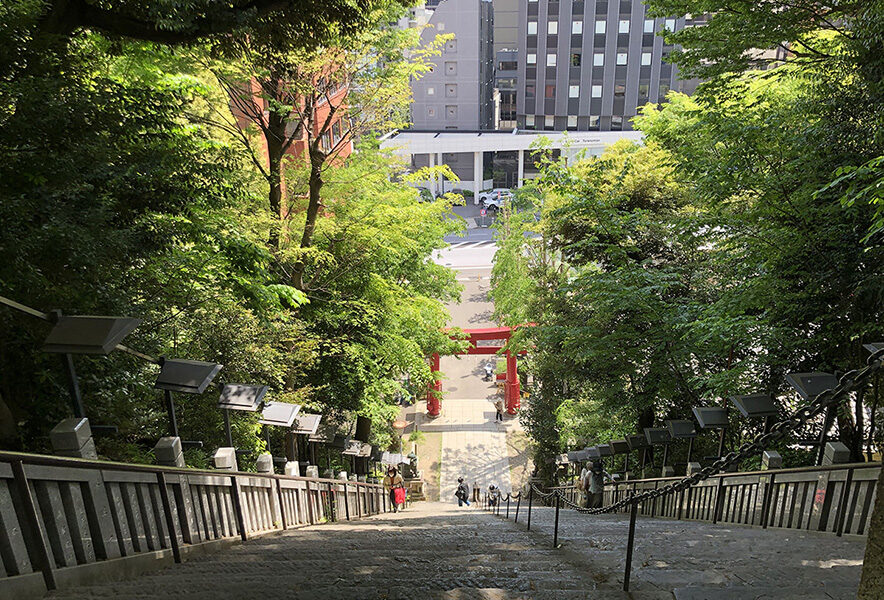Atago jinja Shrine, located in Minato city, Tokyo, is known for its stone staircase, ‘Shusse no Ishidan’, which is said to grant success. The shrine is located on Mt. Atago (26 meters above sea level), which is the highest natural terrain in the 23 wards of Tokyo. Despite being located in the city, it is rich in nature.
The shrine is located in an office district near JR Shimbashi Station and Tokyo Metro Toranomon Station, so during lunch time it is crowded with nearby workers. The shrine is like an oasis left in the heart of the city, a place where people can enjoy nature in all seasons and find peace.
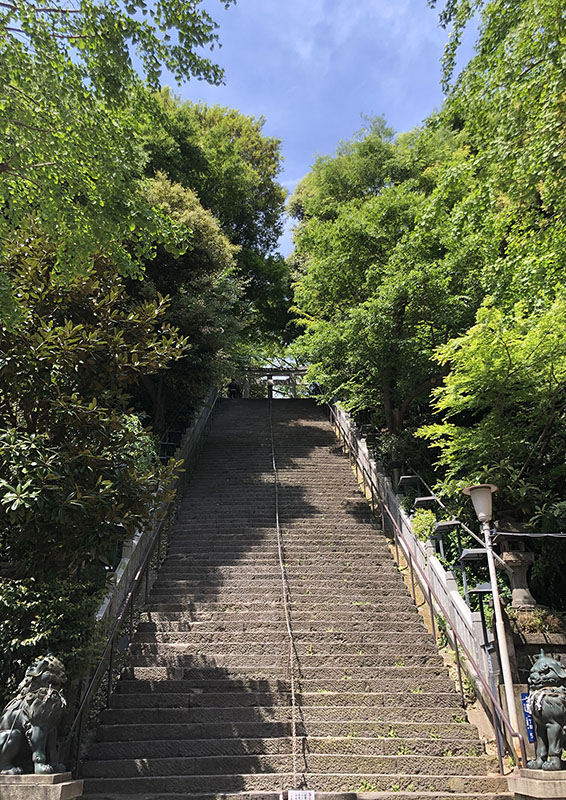

History of Atago jinjya Shrine
In 1603, the shrine was first enshrined as a god of fire prevention, at the order of Tokugawa Ieyasu. The temple later burned down in the Great Edo Fire, but was rebuilt in the Meiji period. Much of it was lost by fire in various disasters, including the Great Kanto Earthquake of 1923 and the Great Tokyo Air Raid of 1945, but it has been reconstructed.
The deity enshrined is ‘Homusubi -no-mikoto’. As the god of fire, Homusubi-no-mikoto is said to prevent fire.
In the Edo period, before the era of skyscrapers, it was said that as far as Tokyo Bay and the Boso Peninsula was visible from the top of the mountain, and the area was crowded with visitors as a place of scenic beauty.

Sights to see of Atago Jinja Shrine
“Shusse no Ishidan” stone steps to success.
The steep staircase leading from the Otorii gate to the main shrine building came to be called the stone steps of success based on an anecdote about Magaki Heikuro in the story ‘Kan’ei Sanba Jutsu’.
The story goes that one day Tokugawa Ieyasu ordered to fetch the beautiful plum blossoms by the main shrine of Atago on horseback. While many failed to climb the steep stone steps, Heikuro succeeded and made a name for himself. The story that climbing these stairs on horseback will bring success has remained to this day, and the stairs have become known as the ‘stone stairs of success.’
Even after the Edo period, there were several people who ventured to climb up and down the Otoko-zaka on horseback and succeeded.
The stone steps are breathtakingly intimidating when you look up from below, but there is also an elevator by the stone steps that leads to the side of the shrine. Those who have trouble climbing can use the elevator to pay homage.
There is also a slope beside the stairs that is easier to climb, but climbing the stone steps are recommended for those who want to feel the power of the shrine, which is considered an energy spot.


Cinnabar-Lacquered Gate
After climbing up the stone steps, you will see the large vermillion ‘cinnabar-lacquered gate’ that serves as the entrance to the shrine. The large gate is marked with the Aoi (hollyhock) crest associated with the Tokugawa family. During the Hozuki Market, a wreath of kaya grass is set up, which is said to ward off evil if you pass through it.
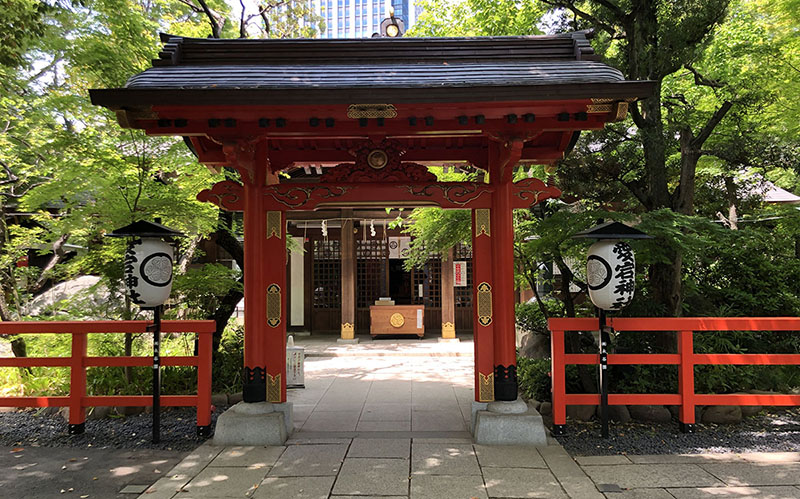
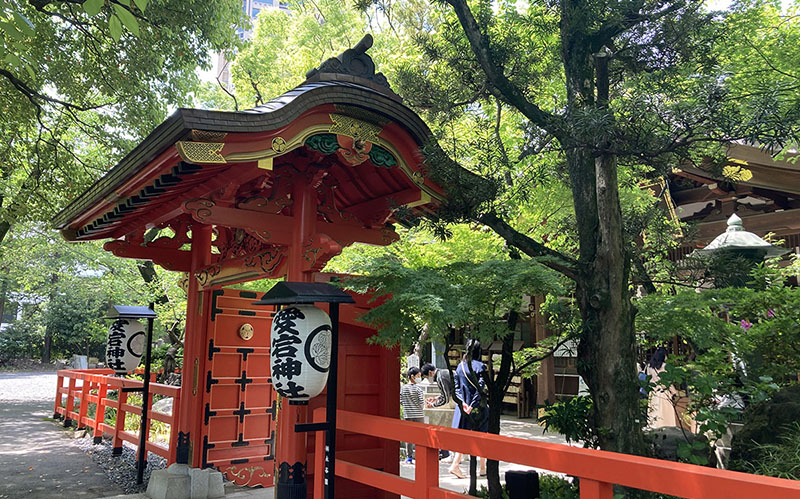
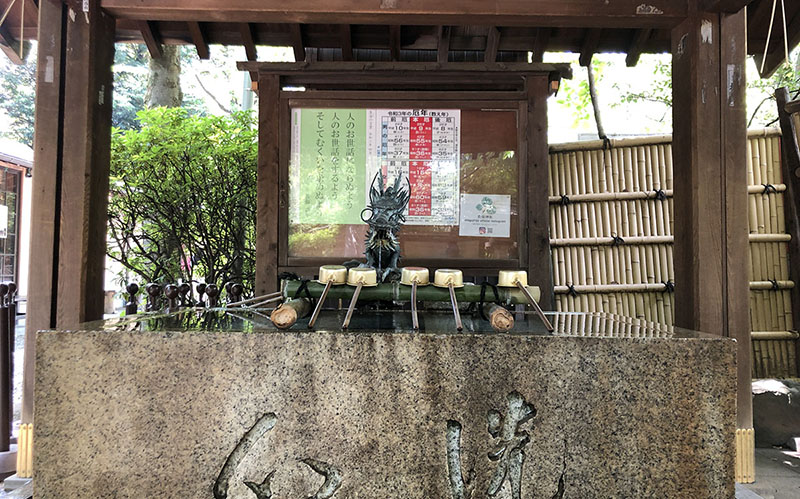
Beckoning Stone
If you look to your left immediately after passing through the cinnabar-lacquered gate, you will see a curiously shaped stone. This stone, called Maneki-ishi (beckoning stone), is a hidden energy spot that invites good fortune when you stroke it.
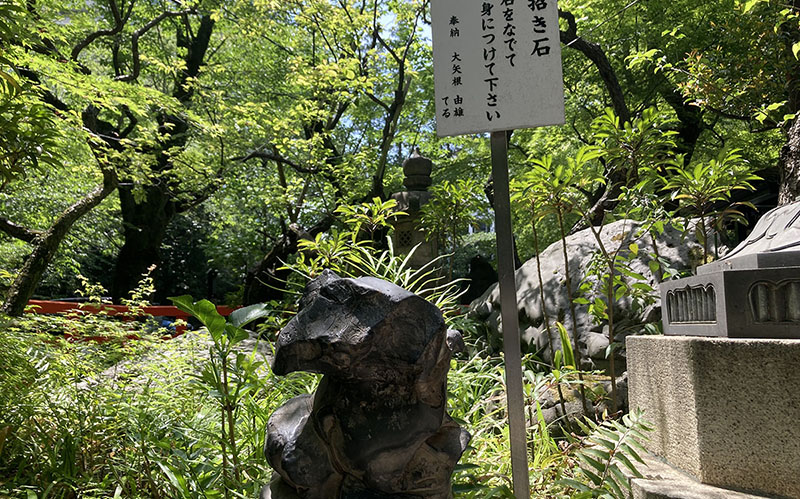
Pond and Benzaiten Shrine
The pond on the grounds of the shrine is said to be the source of ‘Kobansui no Taki (waterfall)’. It is said that a warlord who prayed at this pond and Atago Shrine was blessed by the gods and was able to quell his war. Trees are planted around the pond, and you can enjoy the seasonal scenery of flowers blooming in the spring and the vivid autumn leaves.
Right next to the pond is the Benzaiten Shrine, which enshrines Ichikishimahime , the god of fortune and money.
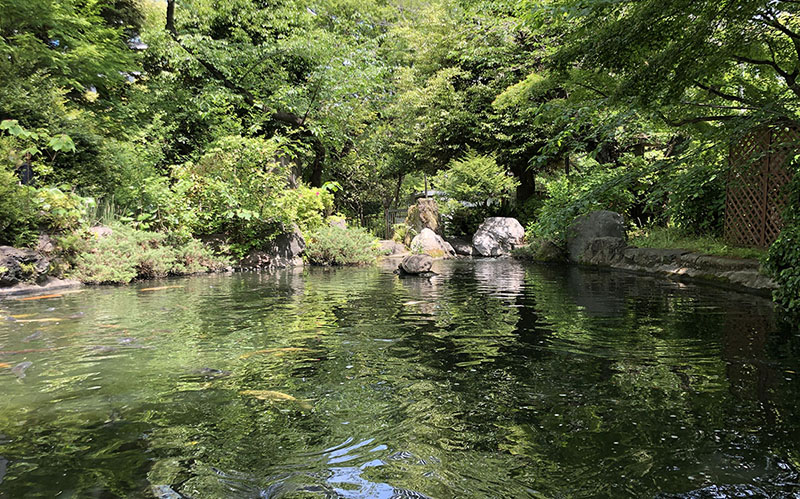

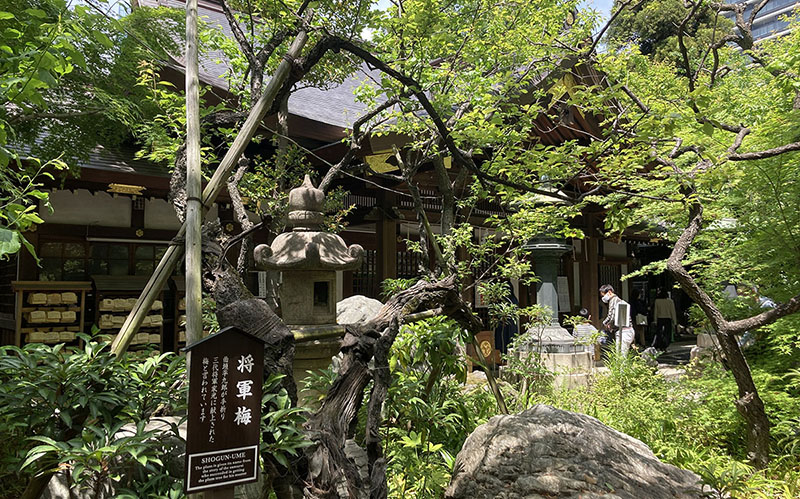
Three Branch Shrines
To the right of the shrine is an energy spot called ‘Tarobo-sha’. It is a branch shrine dedicated to the god Sarutahiko (Tengu-sama).
Next to the Tarobo Shrine, at the end of a series of red torii gates, is the Fukuju Inari Shrine. It enshrines a deity called ‘Uka-no-mitama,’ who is known as the god of business prosperity.
Next to Fukuju Inari Shrine, there is also a branch shrine, Daikokuten Shrine, whose deity is Okuninushi-no-mikoto and Kotoshironushi.
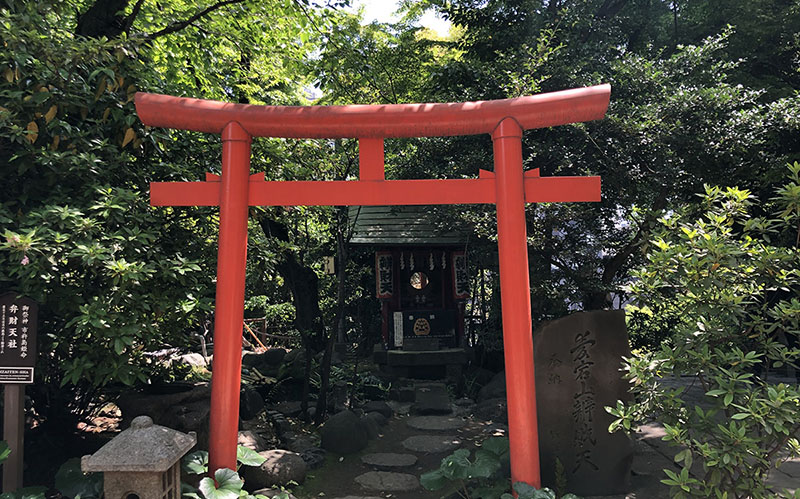
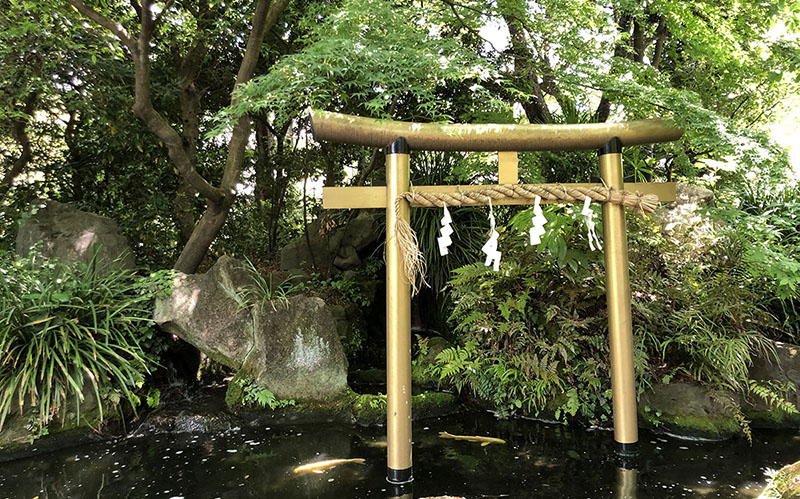
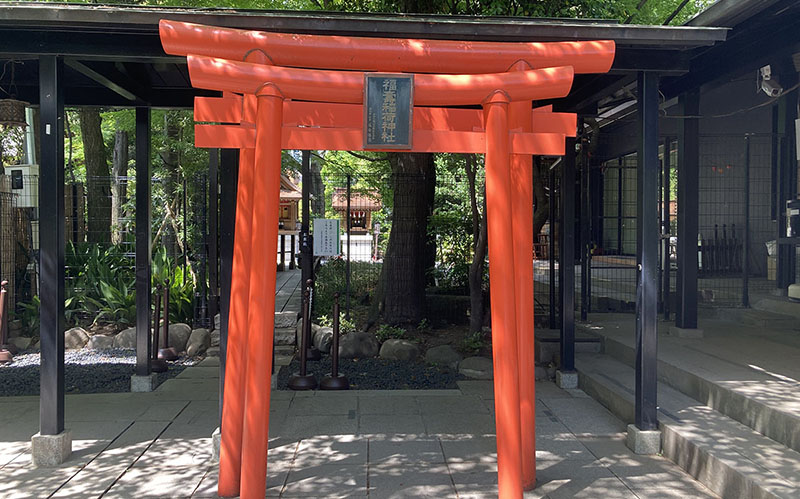


Access to Atago Jinja Shrine
1-5-3 Atago, Minato City, Tokyo
TEL : +81-3-3431-0327
Parking around Atago Jinja Shrine
Atago Jinja Shrine Official Website
official site:https://www.atago-jinja.com/
